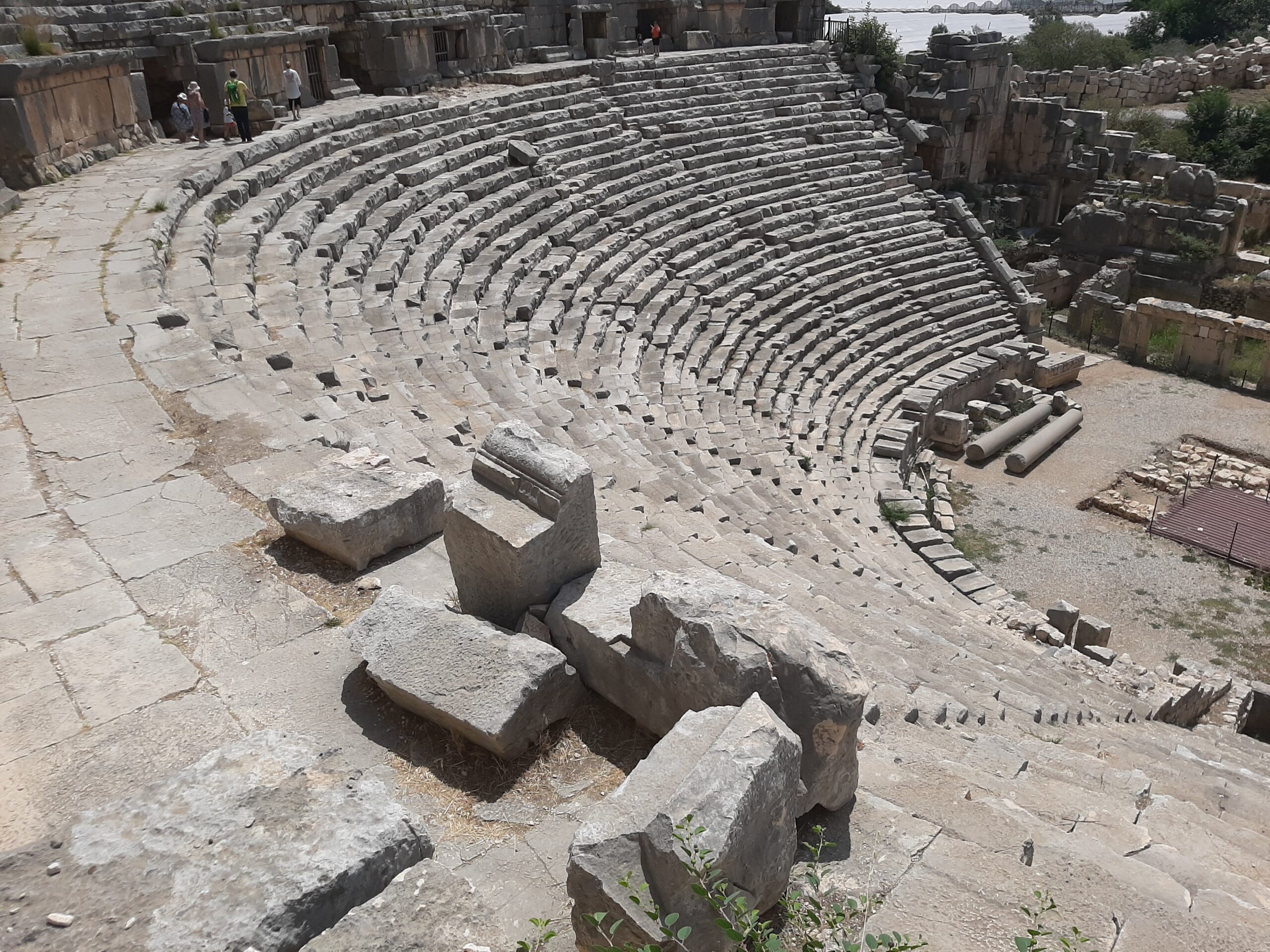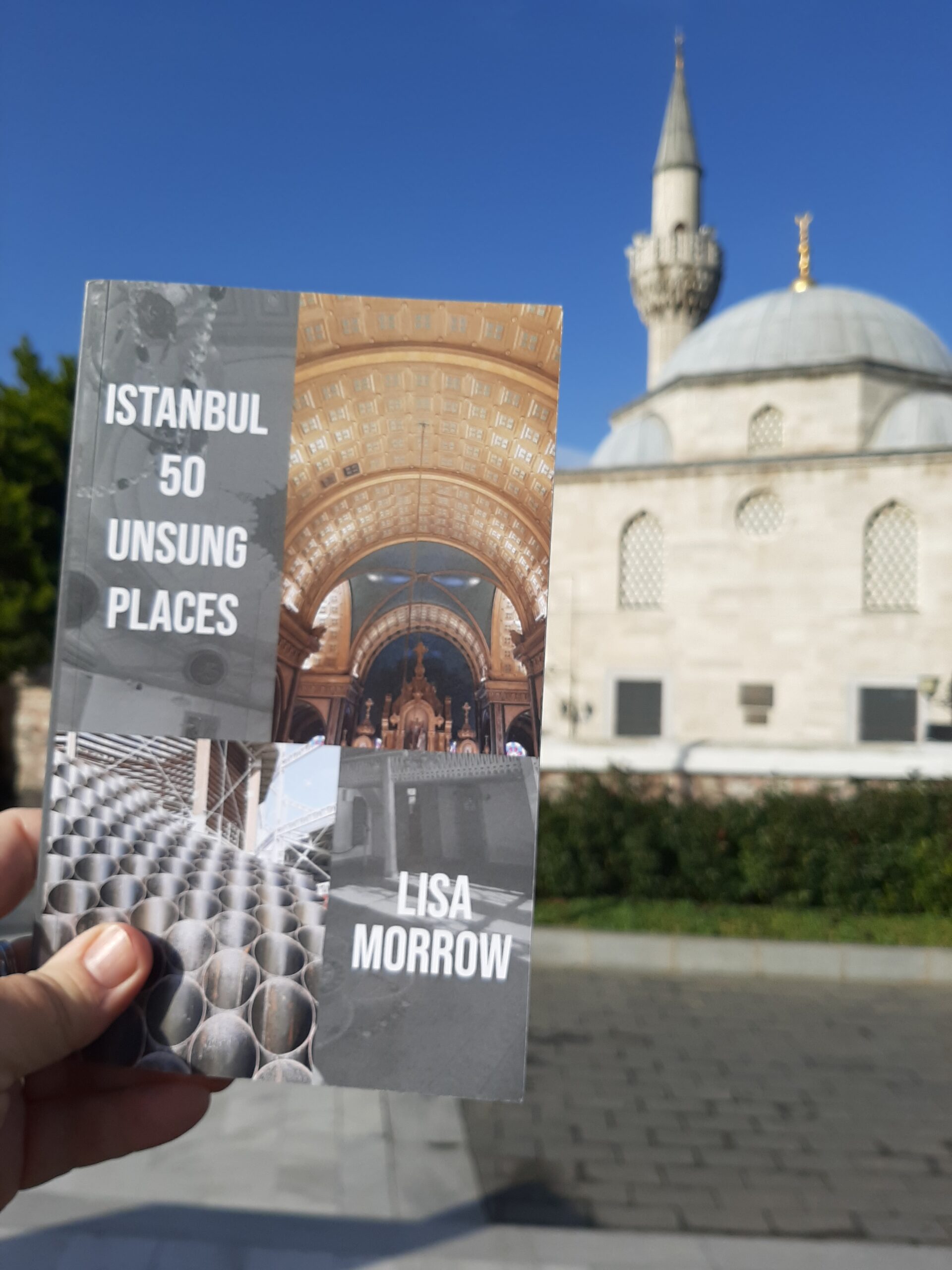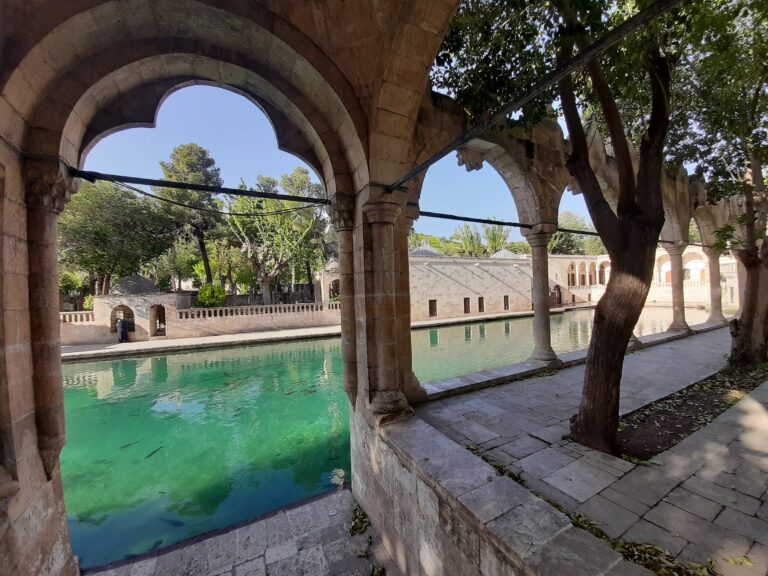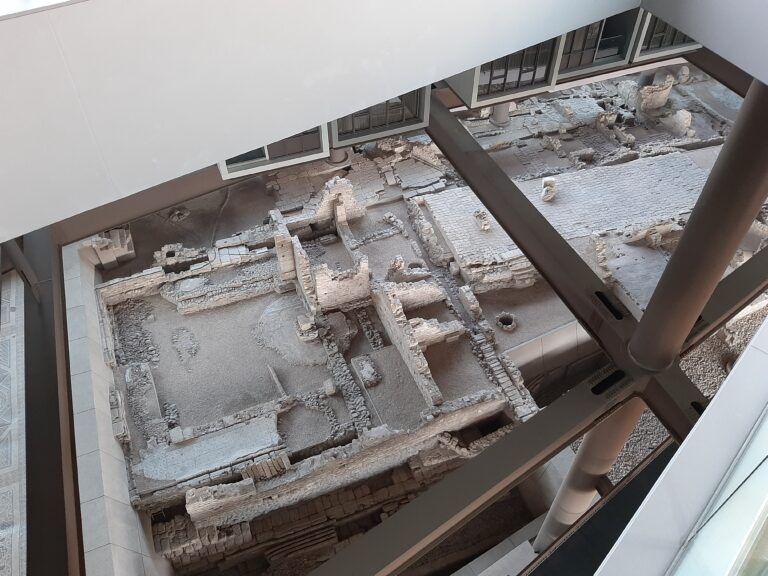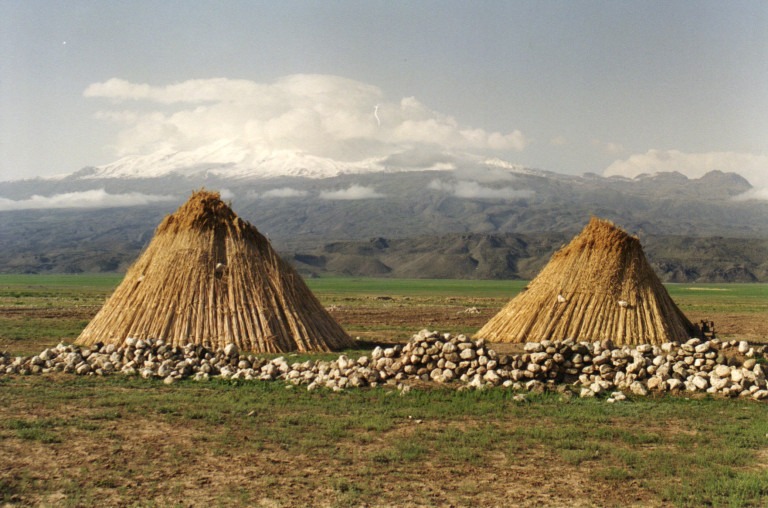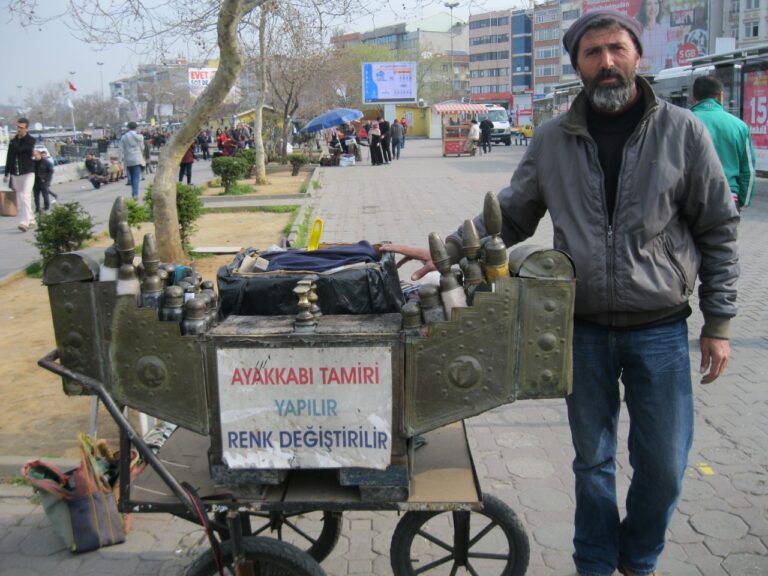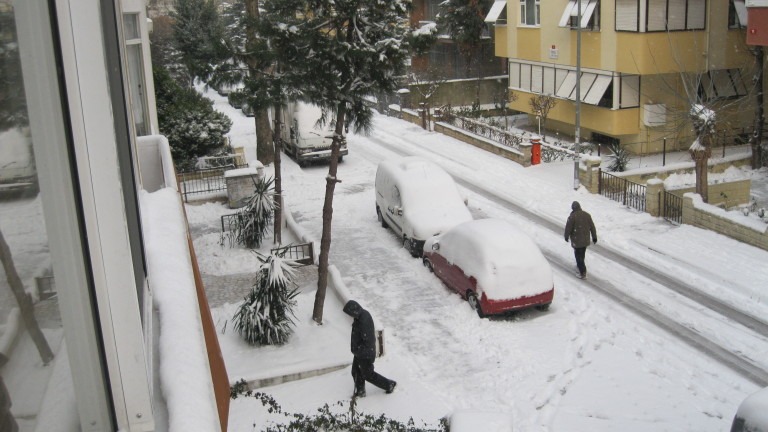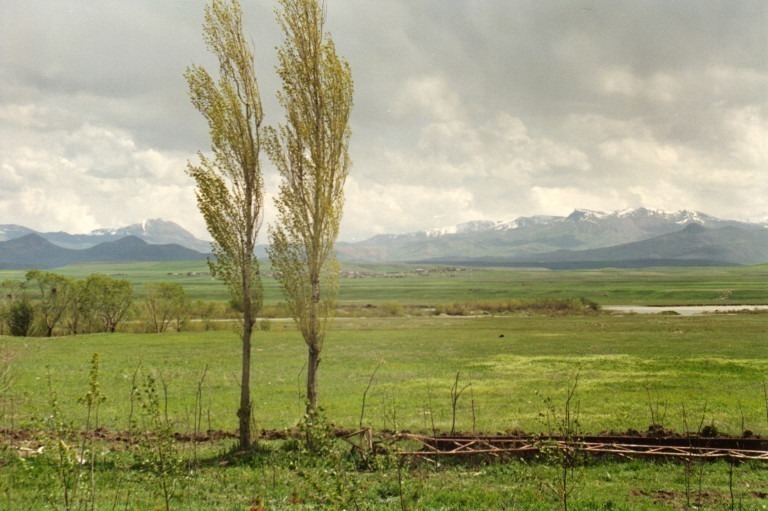Demre
DEMRE HISTORY
Modern day Demre is essentially a dusty farming town full of shops selling agricultural equipment and simple lokanta serving up doner or home cooked food. Tomatoes grow in abundance alongside orchards lush with citrus trees but back in the 5th century BC Myra, as Demre was known, was a powerful Lycian city.
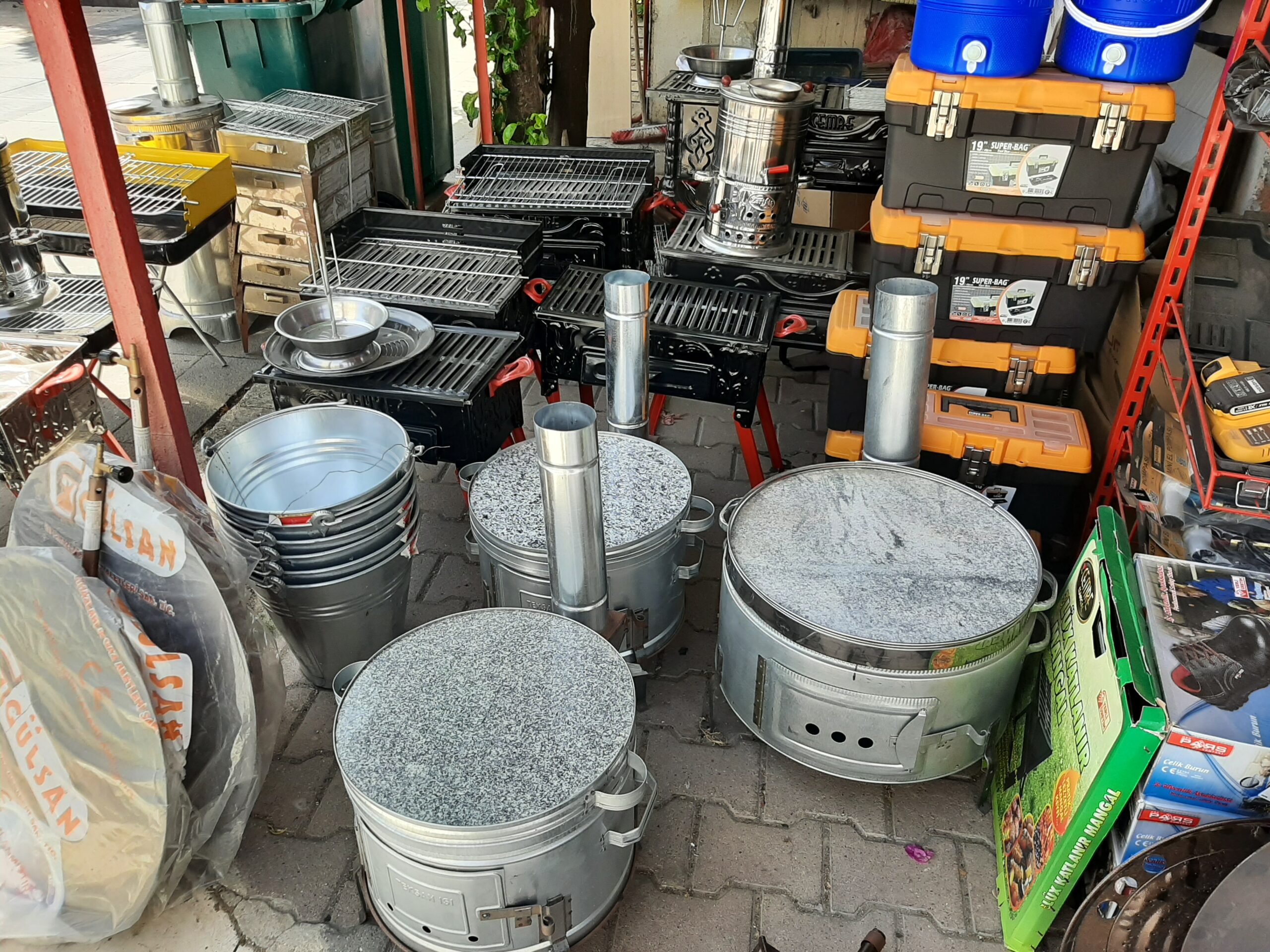
Before it became a Christian centre during the early years of the religion, Myra was also referred to as Place of the Supreme Mother Goddess in reference to Artemis. During the reign of Theodosius II (408 to 450) Demre/Myra was the capital of the Byzantine diocese of Lycia, but the city began to diminish in importance around the 7th century. A series of natural disasters then incursions by Arab raiders saw it reduced to a mere village by the 12th century. However a mainly Orthodox Greek community continued to live and thrive here until the population exchange in the early 20th century, which saw Demre’s demographics alter, as was the case in many small towns and villages around Turkey and Greece. The name changed too at some point and the city was known as Kale for a long period of time, before it reverted to Demre in 2005.
Over the centuries Demre has been home to some illustrious residents. The Apostle Paul came to Demre in the 2nd century AD but more importantly, especially for kids on December 25, it’s the birth place of Nicholas of Myra, later called Saint Nicholas, the man best known as Santa Claus.
WHAT TO SEE IN DEMRE
There are two major historical sites to see in Demre proper, with a third not far from the town. The first is the Myra Antik Kenti, or Myra Ancient City in English.
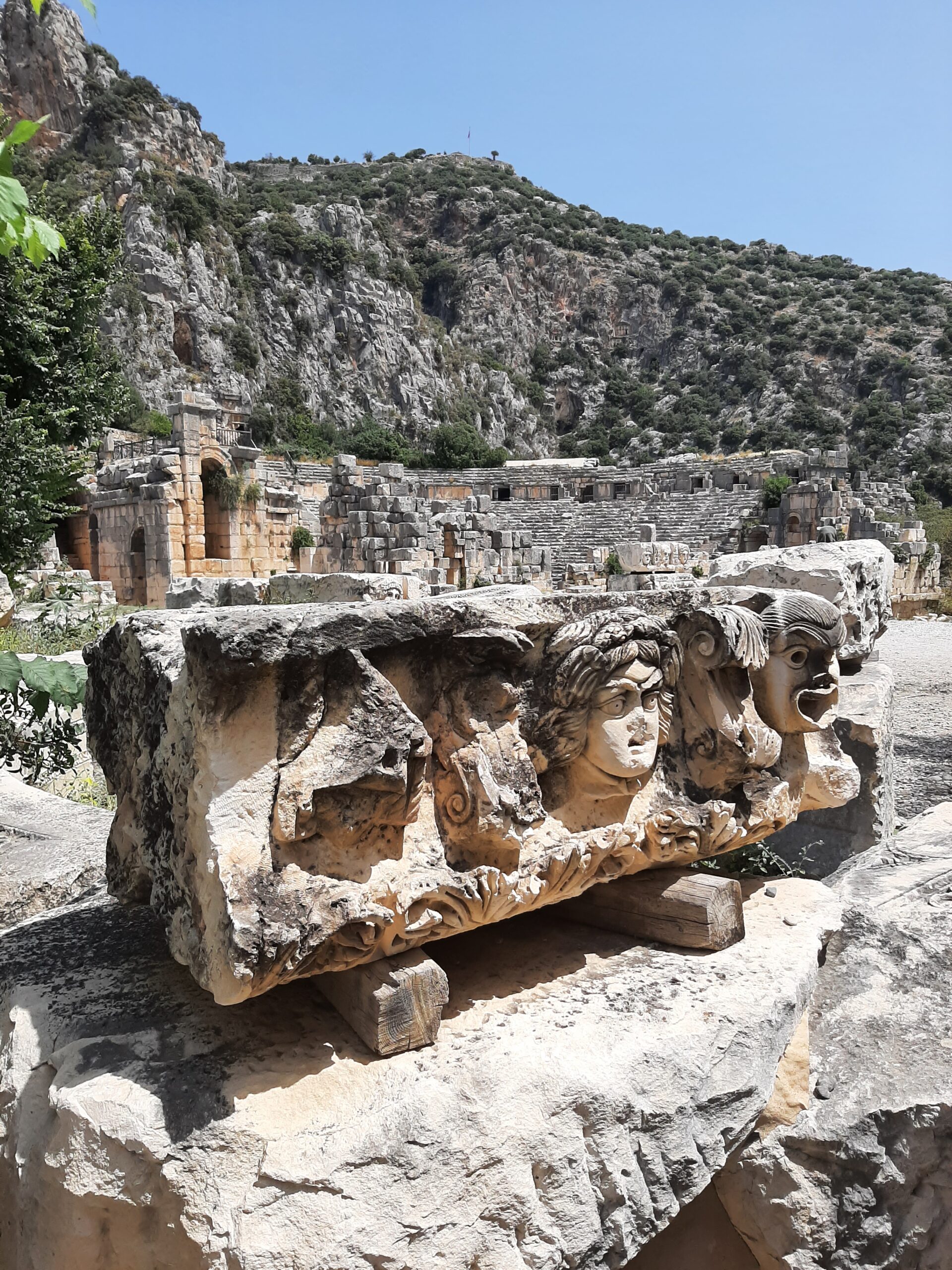
Myra Ancient City is a compact site that makes for a satisfying visit, with a theatre and a number of rock tombs set in a tree filled oasis in the middle of acres of citrus groves. The theatre was built during the Roman period but unfortunately no significant remains of the acropolis that once towered above the rows of stone seating remain. It’s the best preserved of all the theatres in the Lycian region but was almost totally destroyed by an earthquake in 141. The fact it still exists is down to a wealthy merchant named Opramoas from Rhadiapolis who paid to have it repaired. In its heyday the theatre could hold approximately 11,000 people. Most of the two-storey stage structure is still in place and it’s well worth the climb to the top to see the layout for yourself.
The arched recesses along the crest also make a good spot to get out of the glare of the midday sun if you visit the site in high summer, as I did. I was enjoying the cool they provide when a friend called me out of the blue. As we chatted a woman came up to where I was standing and waved at me. I didn’t recognise her but once I finished my call she asked if I was Lisa. When I said yes, she told me she followed me on social media and recognised me from my red hair. It was both flattering and slightly embarrassing to realise I am now a little bit famous but it was fun to talk and take a photo together.
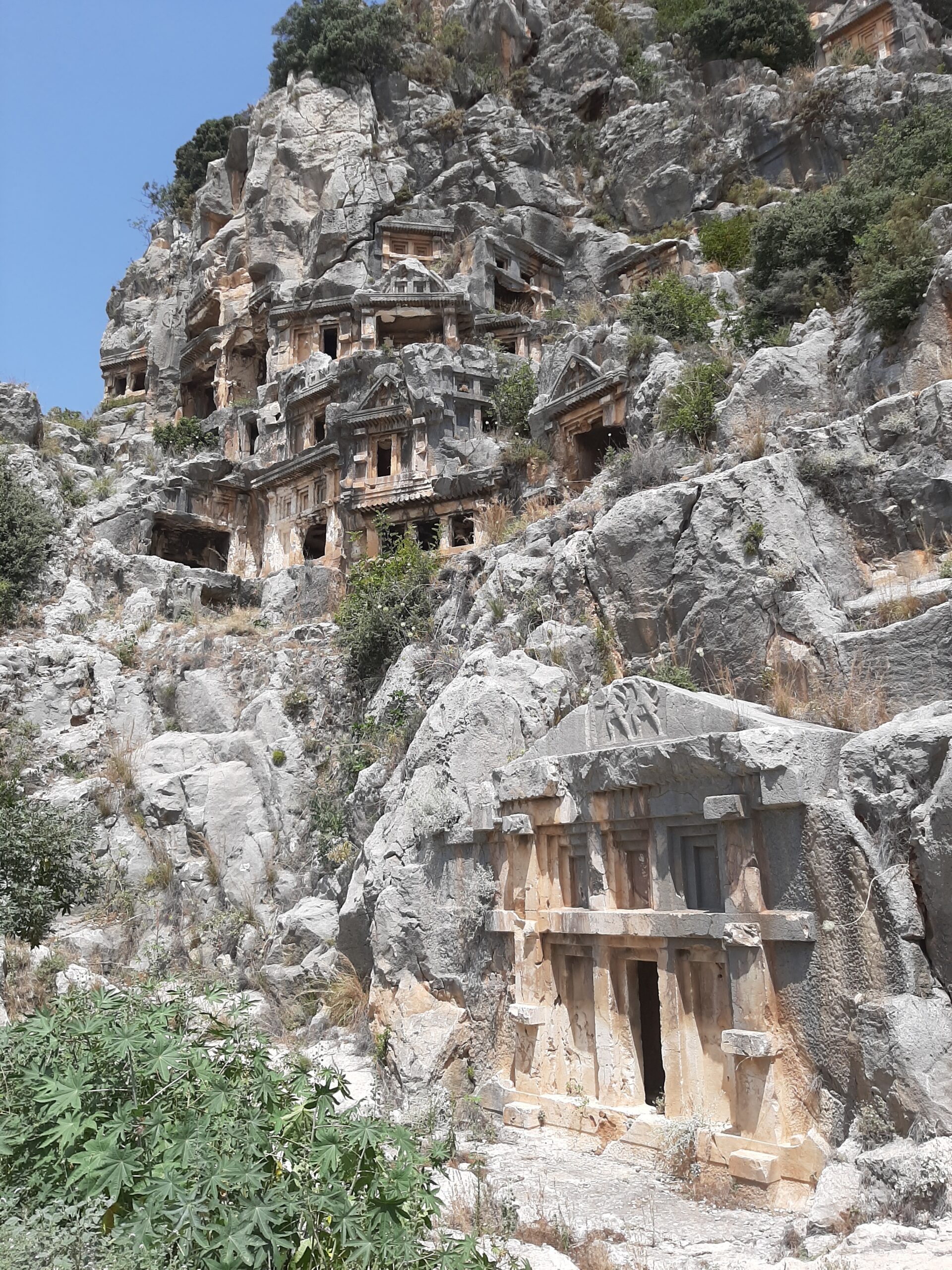
Back down at the bottom of the theatre you get a good view of the two Lycian tombs, one the famous Lion Tomb, carved into the cliffs on the left. Originally a city, one of the six most important Lycian centres of its day, perched above this same cliff and extended down to the slopes.
Myra Antik Kenti is a 2 kilometre walk from Demre bus station. If you follow the main road up (it’s very flat) and turn left at Alikahyalar Sokak (there’s a bus shelter at the fork) you walk through groves and fields of greenhouses rather than on the main road. If it’s blisteringly hot or you’re not much of a walker, take a taxi from the bus station.
Myra Ancient City is open every day, 8.00-20.00. Entry fee €13*
Aziz (St.) Nikolaos Anıt Müzesi (St Nicholas Church Museum)
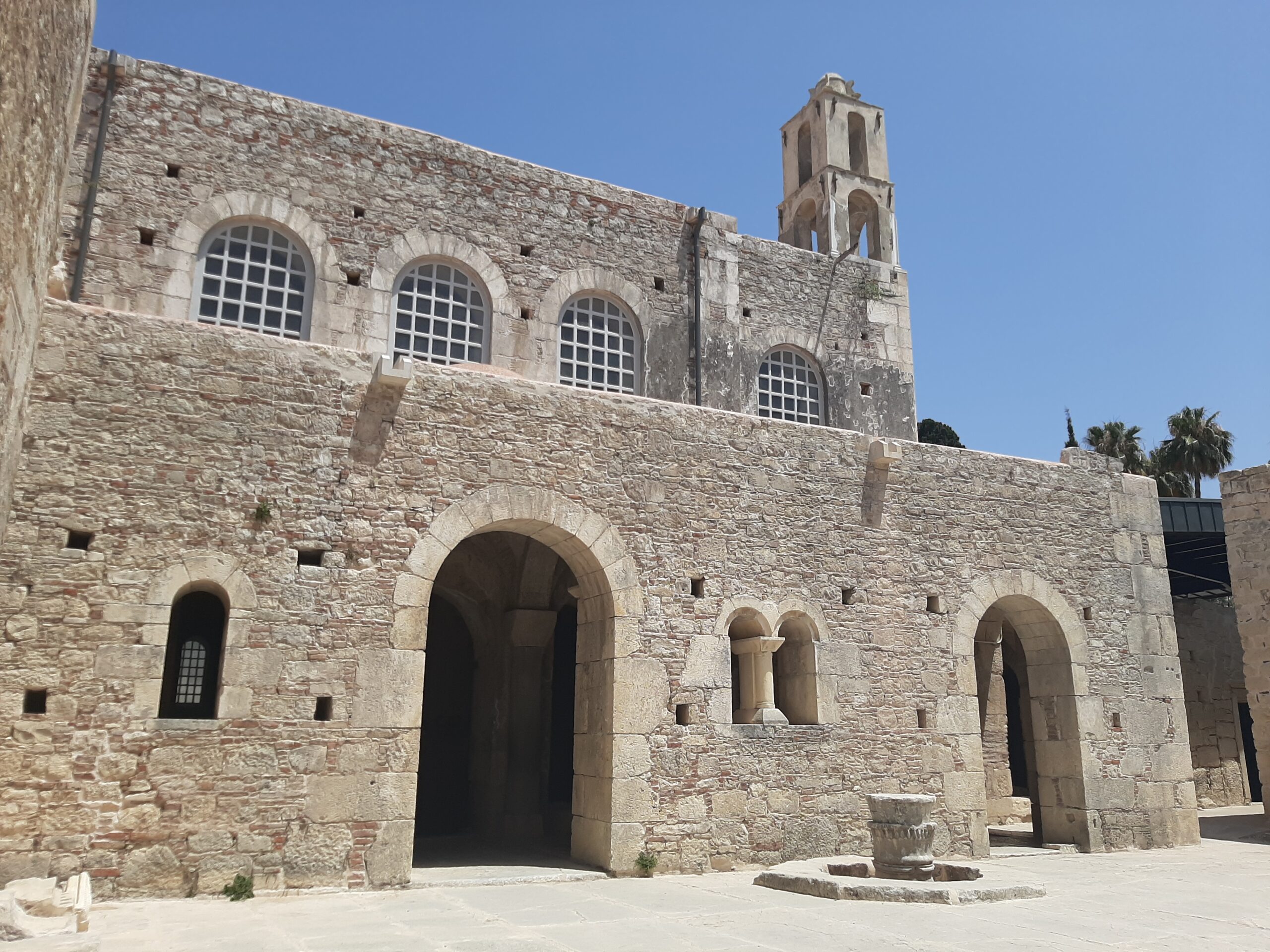
The present layout of the St Nicholas Church is the work of Byzantine Emperor Constantine IX from 1042. More repairs were carried out in 1862, including the addition of the bell tower, gifted by Russian Tsar Alexander II. Architecturally it’s a fairly simple design. What makes it special is the man it’s named for.
St Nicholas was born in Patara sometime between 260 and 280AD. When his parents died, they left him a lot of money, making him a very wealthy man. Instead of living it up Nicholas entered the religious life and eventually became the bishop of Myra, then capital of the Lycian province. As bishop, Nicholas was the second most powerful religious authority in Anatolia but was more concerned with doing good.
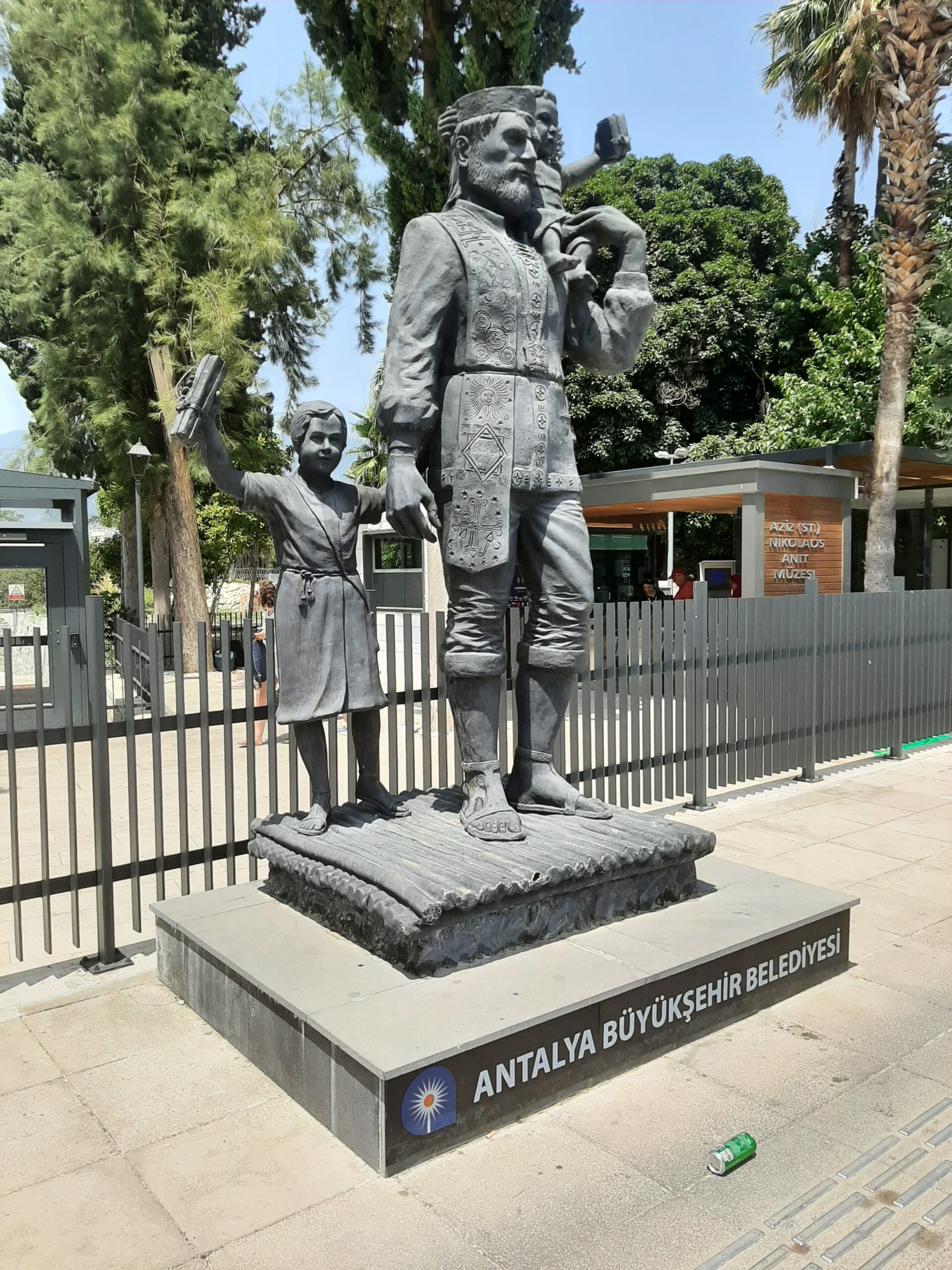
Legend has it he wanted to help poor people anonymously so would climb on the roofs of people’s houses and drop coins down the chimney. One day, a local saw Nicholas at it and revealed his identity. After his death in 343 Bishop Nicholas was canonised, becoming Saint Nicholas, patron saint of sailors and children but better known as the latter, remembered for giving them nuts, fruit and sweets for good behaviour. You probably know him best as Santa Claus.
During the Middles Ages St Nicholas church was an important pilgrimage site and still attracts some 1 million visitors from all around the world each year.
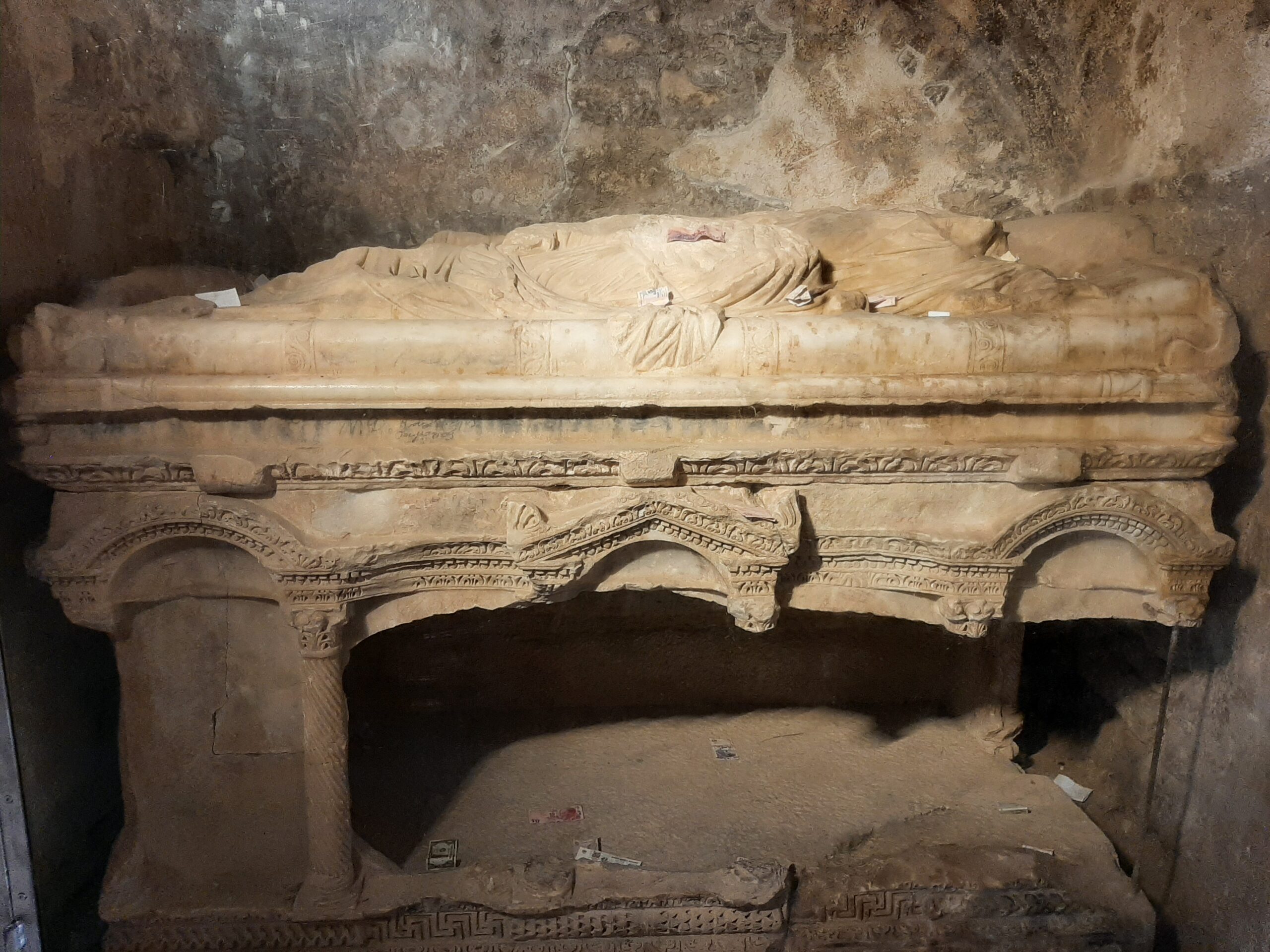
The church holds his original sarcophagus, decorated with fish scales and acanthus, although his bones were stolen in the 10thcentury by Italian sailors. They’re now encrypted in a church on the south east coast of Italy. Fragments of his bones are on display at Antalya Museum. St Nicholas Church contains some wonderful 11th century frescoes showing the miracles and scenes such as The Communion of the Apostles and has been on the UNESCO World Heritage Tentative List since 2000.
The date on which he died, December the 6th, soon became associated with the feast of St Nicholas. As Christianity grew in influence December the 25th was set as the day Jesus was born and over time the two celebrations fused together, resulting in the first connection between Santa Claus, Saint Nicholas, and Christmas Day. Nonetheless, Call to Peace with Santa Claus events are organised in Demre every year on December 6 to commemorate his death. Participants from different religions attend peace prayers together, reinforcing St Nicholas’ message of tolerance and harmony.
Merkez Mahallesi off Andrey Karlov Caddesi
Open every day, April 1 – October 1, 08.00 -19:00, October 1- April 1, 8.00-17.00
Entry fee: €17
The street where you’ll find the church is named for Andrey Karlov, Ambassador of the Russian Federation in Ankara from 2013-2016. His time in office came to an abrupt end when he was killed on December 20 in an act of terrorism.
Likya Uygarlıkları Müzesi ve Andriake Örenyer (The Lycian Civilizations Museum and Andriake Ruins)
The modern day Lycian Civilizations Museum and Andriake Ruins are 5 kilometres south west of Demre, but once upon a time Andriake was where pilgrims travelling from Jerusalem would dock before continuing on to St Nicholas Church. Sailors and traders sought shelter in the protected bay, used right up to and through the Byzantine period. Judging by the size of the Granarium, the Horrea Hadriani named for Emperor Hadrianus, the original port infrastructure must have been substantial. Eight large rooms still stand in an area covering 2300 metres squared. As the name indicates, the Granarium was once used to store grains as well as other produce brought here by sea. There’s also an agora with shops on three sides and a cistern in the middle. Over in the museum archaeological artefacts from the Lycian civilisation are displayed in halls named after the major cities in the Lycian League and naviphiles will enjoy the animated simulations of the workings of the port.
Open 7 days: October 1 – April 1, 8.30-17.30, April 1 – October 1 8.30-20.00. Entry €4 (I’ve read conflicting information on opening and closing times, so I’d check with tourism information or your hotel if you plan to visit after 17.30 in summer.)
HOW TO GET TO DEMRE FROM KAS ANTALYA BY BUS
The Batı Antalya Tur company run services between Antalya and Fethiye, stopping off at Demre and other various stops along the way. They’ve been around for a long time and not much has changed in terms of the comfort they offer, although they do have a website now. That said, it’s still simpler to buy your ticket to Demre at the Kaş Otogar (the bus station). I usually arrive about 15 minutes before the service is due to depart although in summer it’s advisable to get your ticket earlier, even the day before.
The bus from Kaş to Demre takes about an hour and drops you off at the Demre Otogar, half a kilometre up from the highway, just at the start of the town.
************************************
*there is a new pricing system as of 1.3.24. Entrance fees are quoted in Euro but paid in TL, calculated on the daily exchange rate. Some of these sites are free for Turkish citizens holding a Muze Kart.
************************************
Planning to come to Istanbul or Turkey? Here are my helpful tips for planning your trip.
Don’t pay extra for an E-VISA. Here’s my post on everything to know before you take off.
However E-SIM are the way to go to stay connected with a local phone number and mobile data on the go. Airalo is easy to use and affordable.
Even if I never claim on it, I always take out TRAVEL INSURANCE. I recommend Visitors Coverage.
If you haven’t been to Istanbul yet, why not include a few days sightseeing in the cultural capital of Turkey? I use Kiwi.com for FLIGHTS,and when I’m looking for ACCOMMODATION I use Booking.com. I’m a big advocate of public transport and it’s easy to get from either airport in Istanbul, but know it’s not suitable for everyone all the time. When I need to be picked up from or get to Istanbul Airport or Sabiha Gokcen Airport, I use one of these GetYourGuide website AIRPORT TRANSFERS.
Whether you’re a do-it-yourself kind of traveller or like someone to show you around, these CITY TOURS & DAY TRIPS have you covered. Let me guide you around Kadikoy with my audio walking tour Stepping back through Chalcedon or venture further afield with my bespoke guidebook Istanbul 50 Unsung Places. I know you’ll love visiting the lesser-known sites I’ve included. It’s based on using public transport as much as possible so you won’t be adding too much to your carbon footprint. Use the GetYourGuide website or Viator to find even more ways to experience Istanbul and Turkey with food tours, visits to the old city, evening Bosphorus cruises and more!
However you travel, stay safe and have fun! Iyi yolculuklar.
